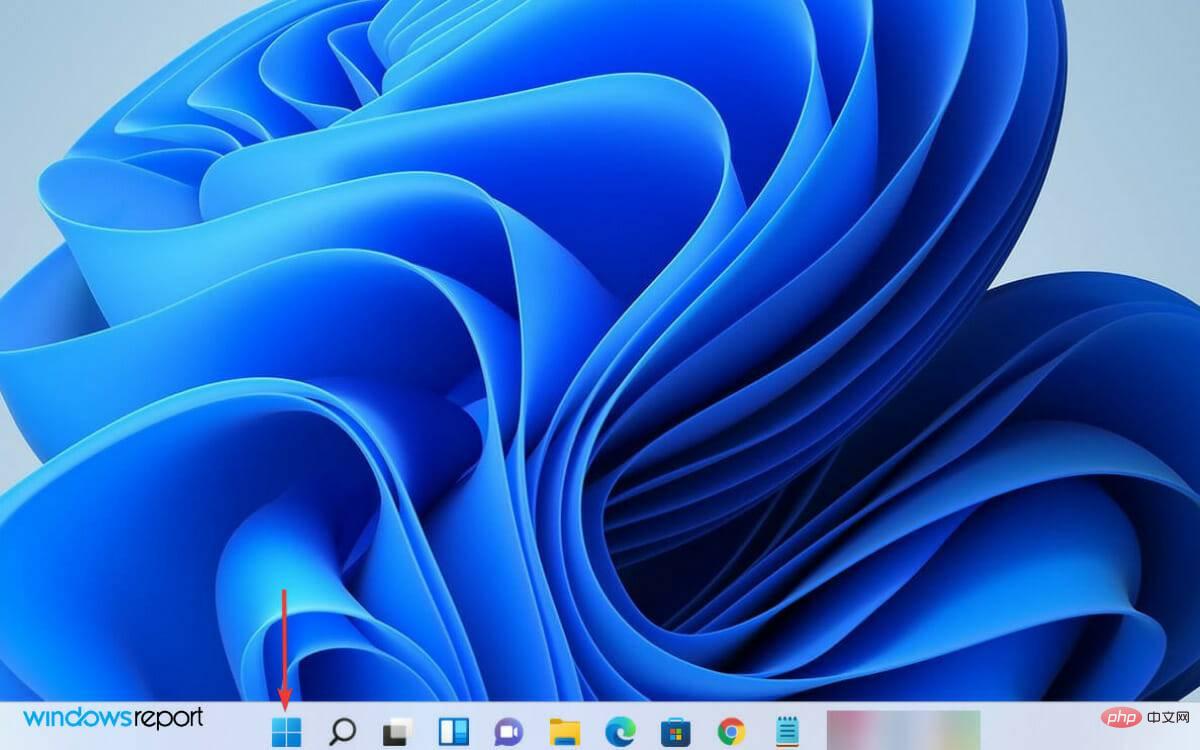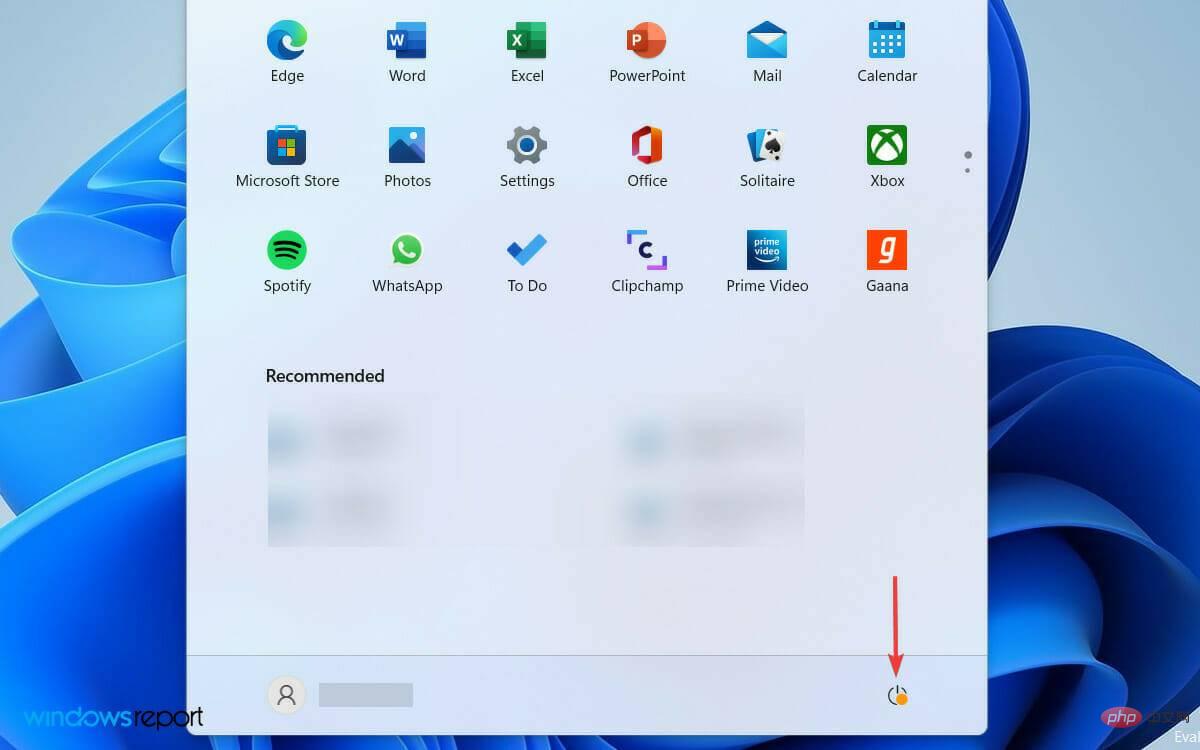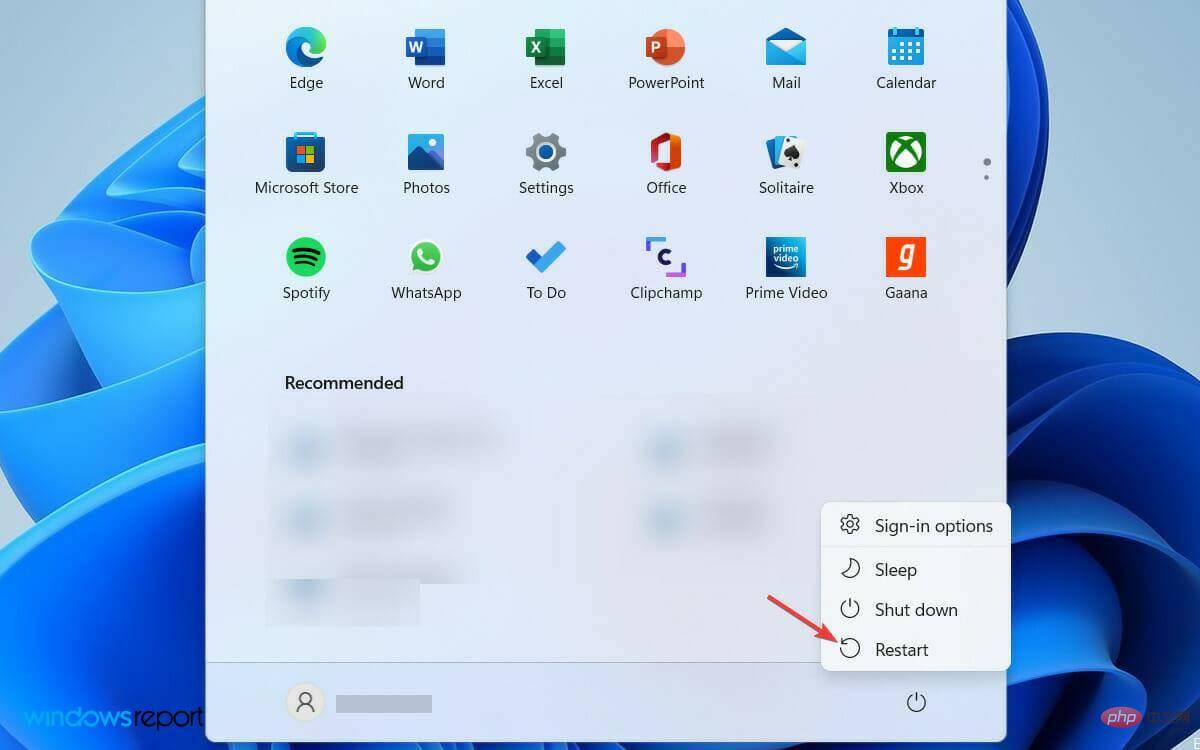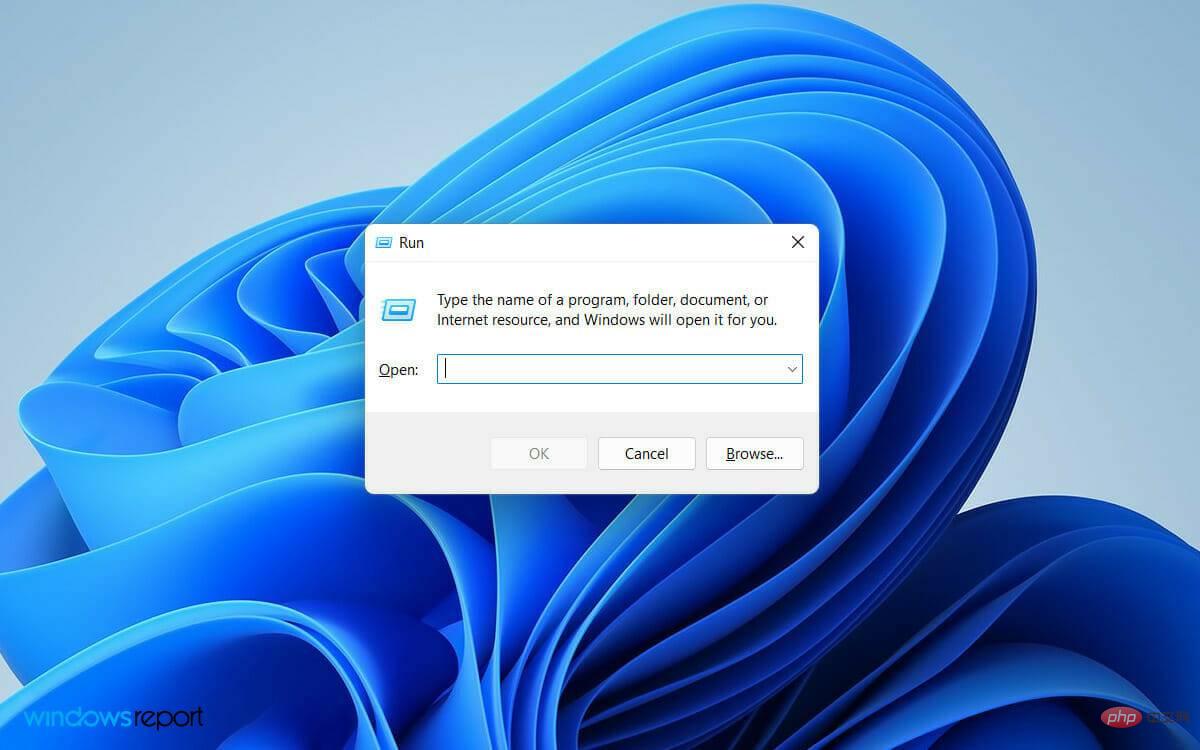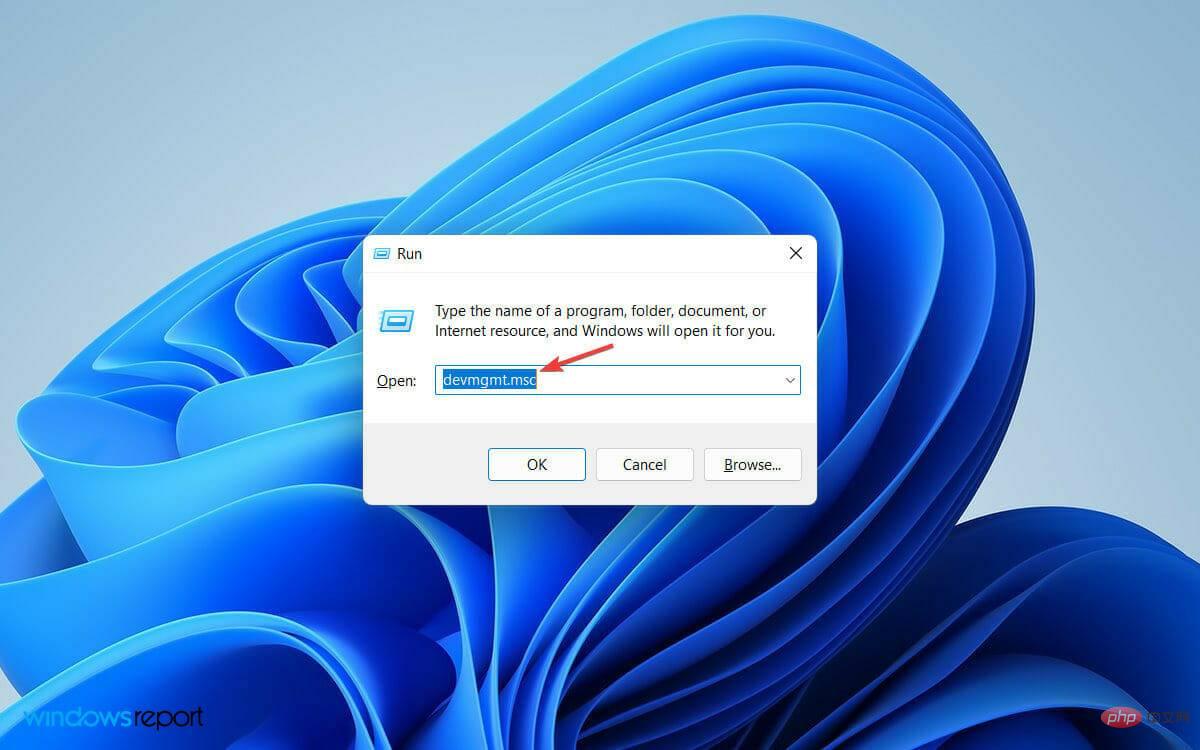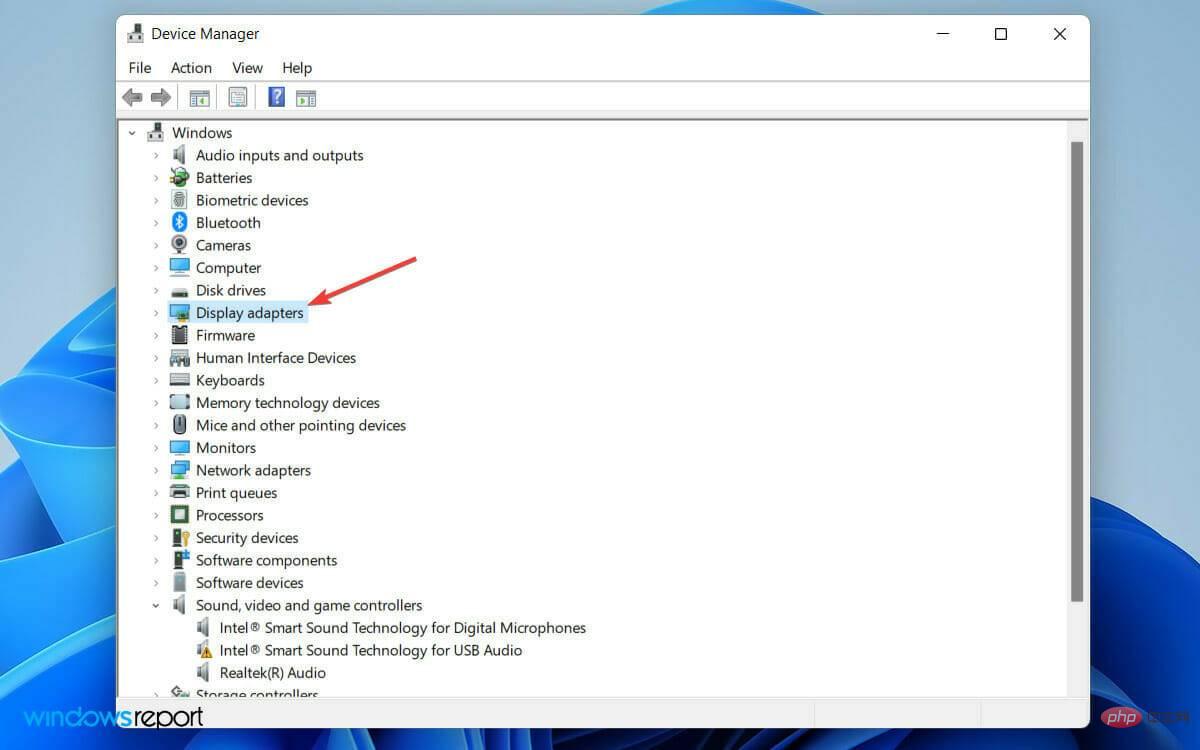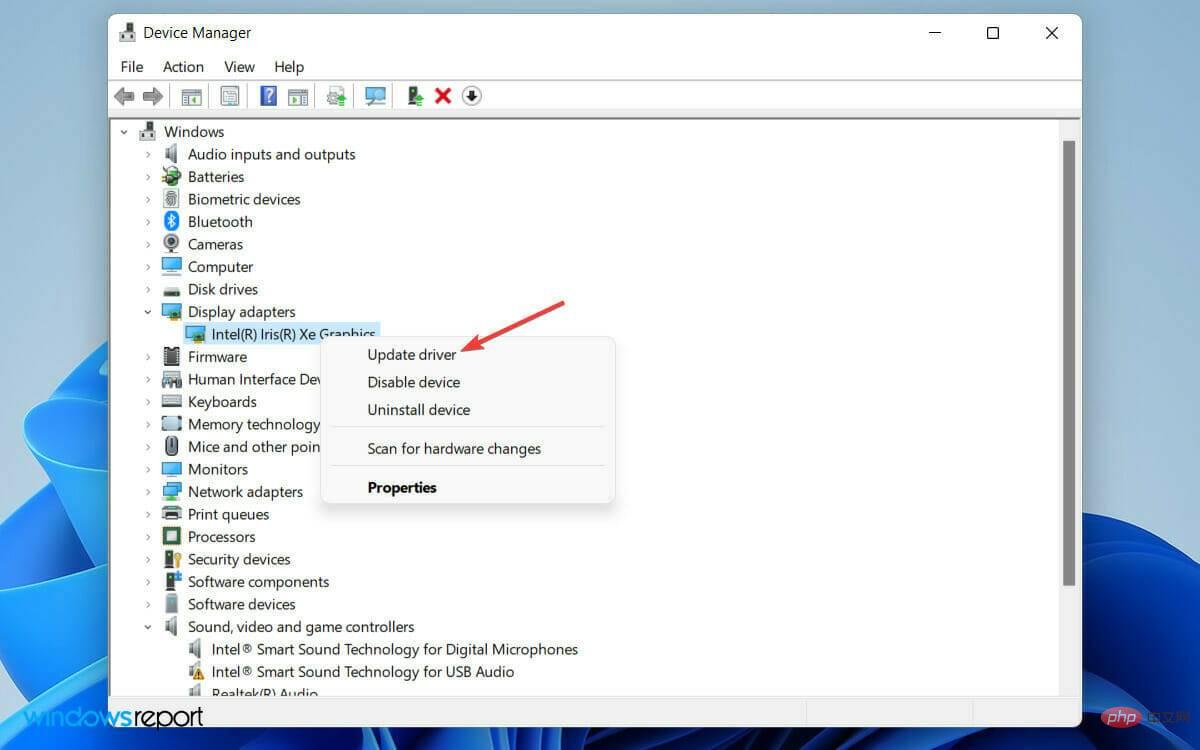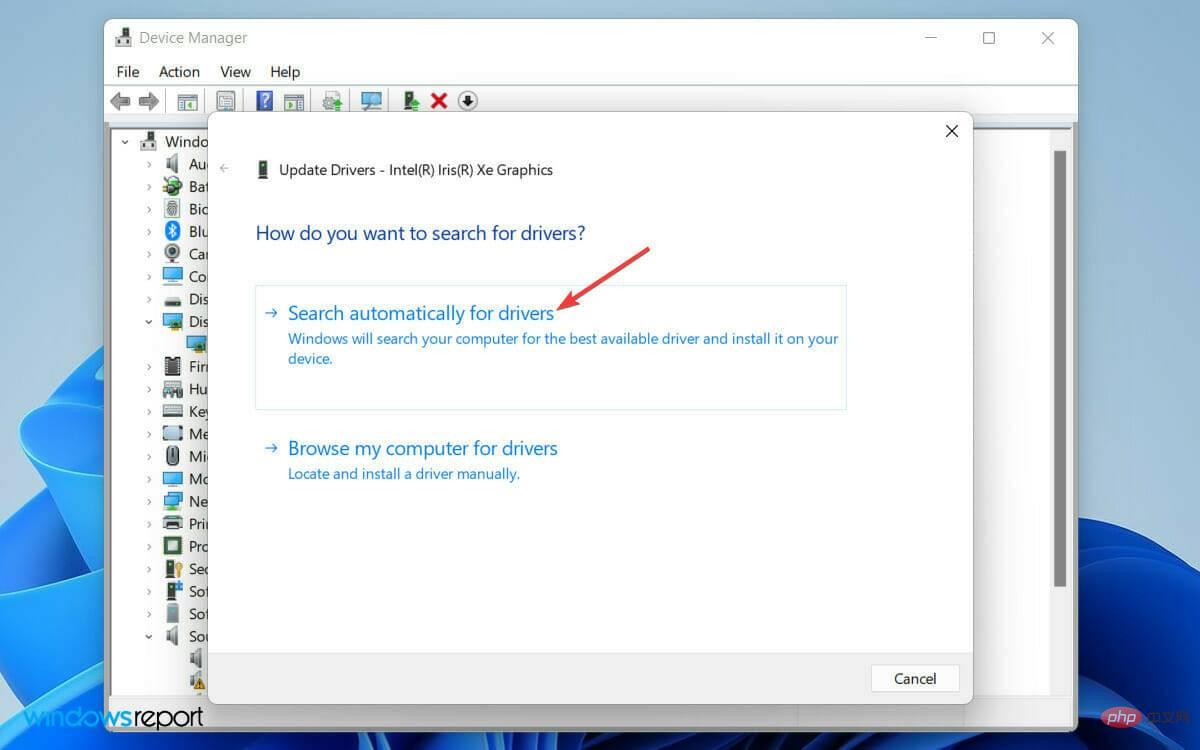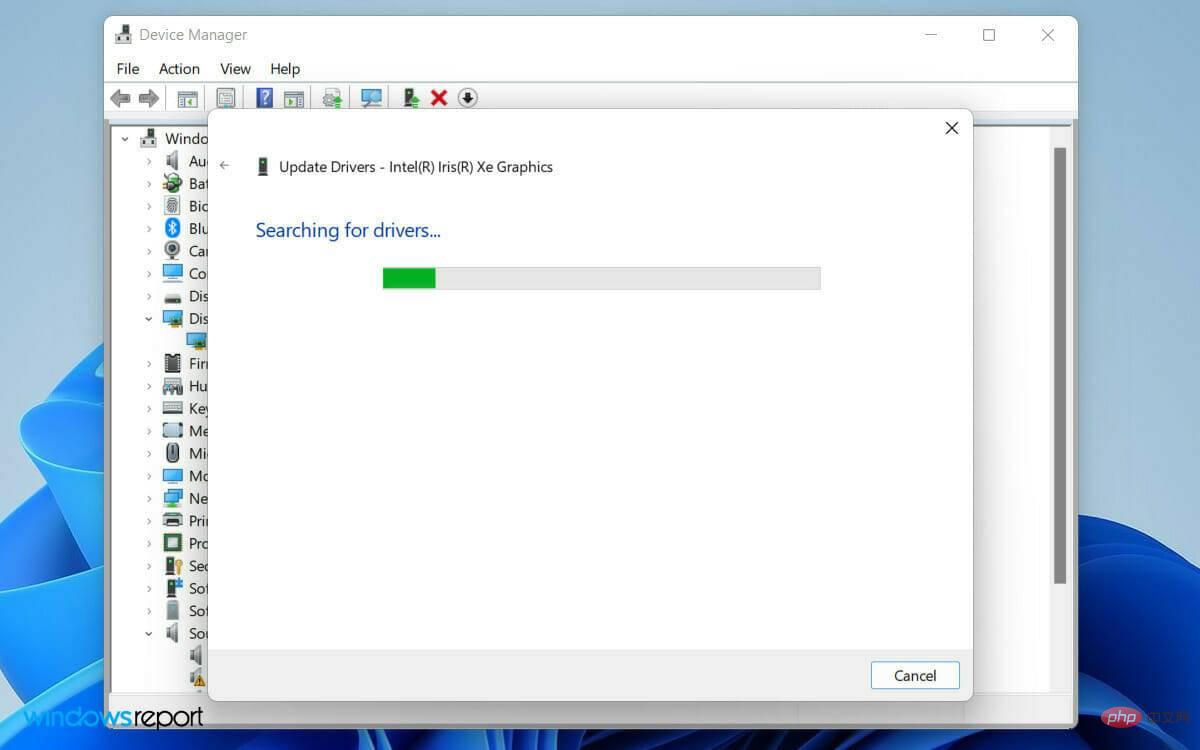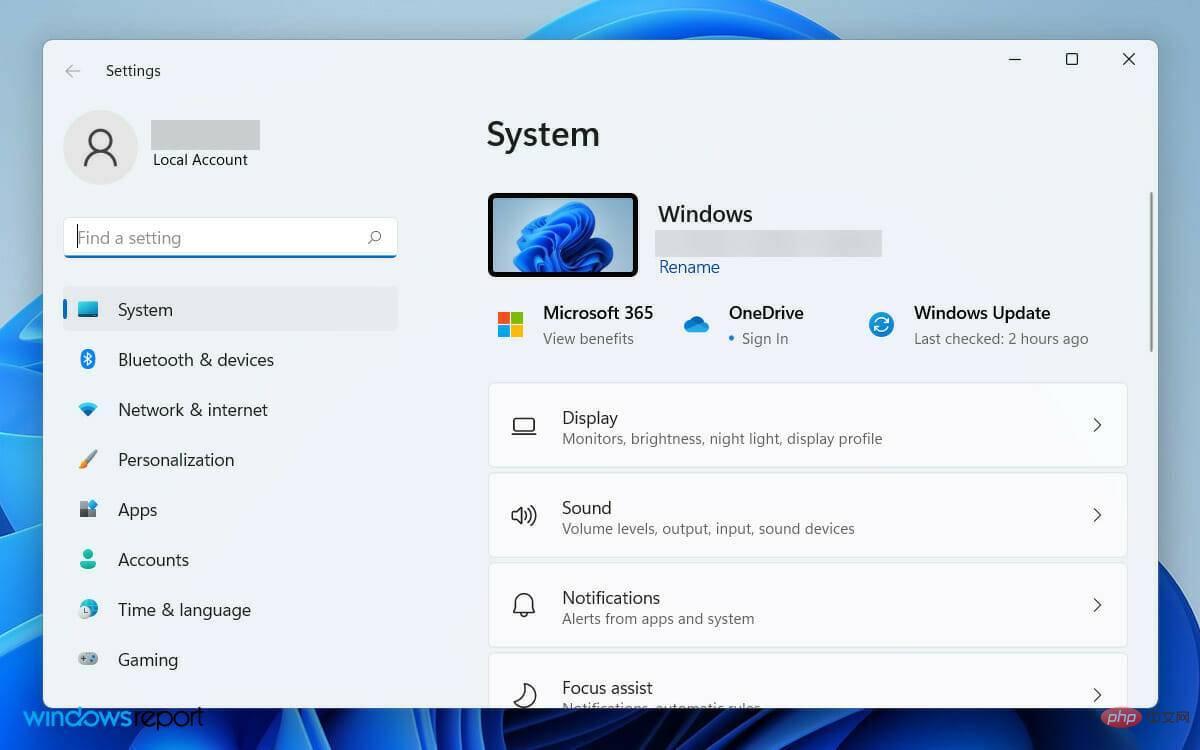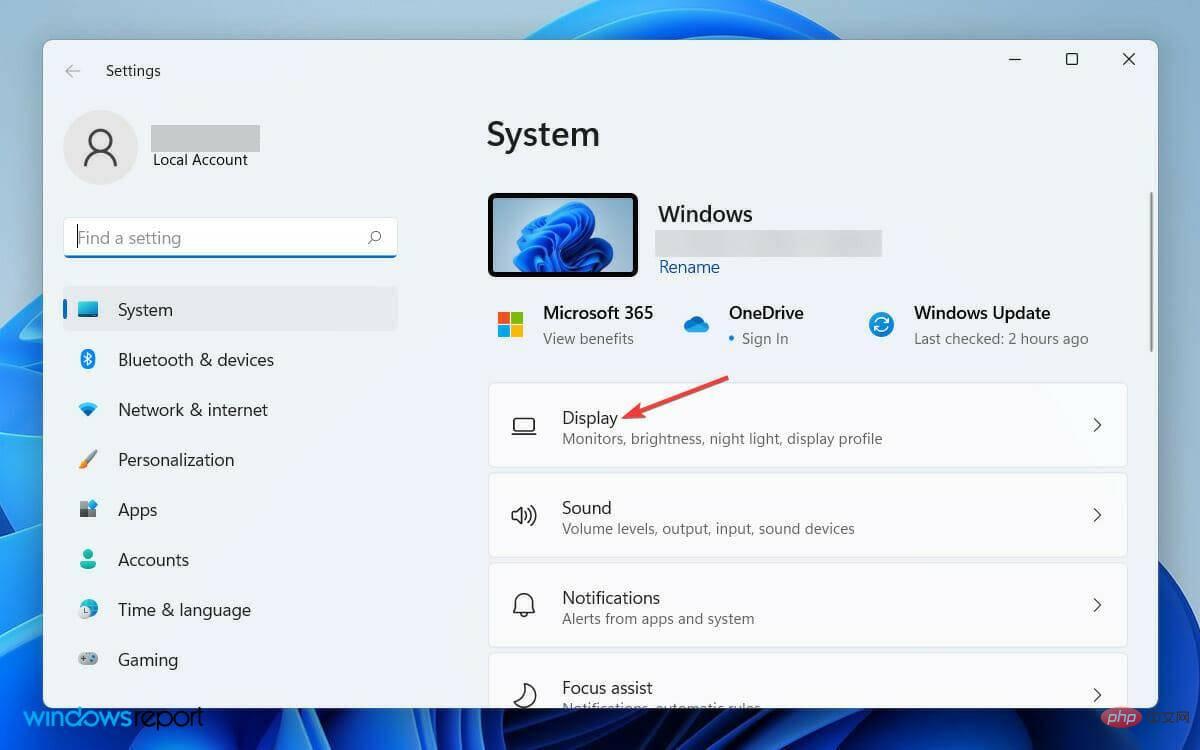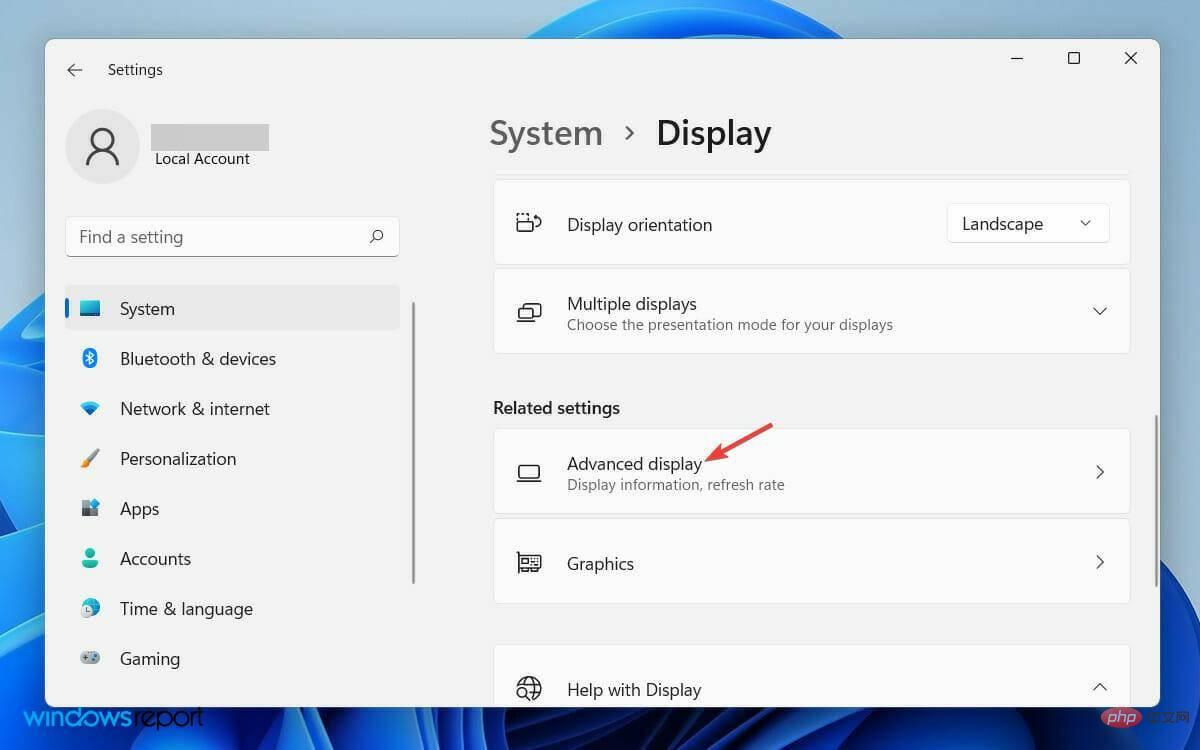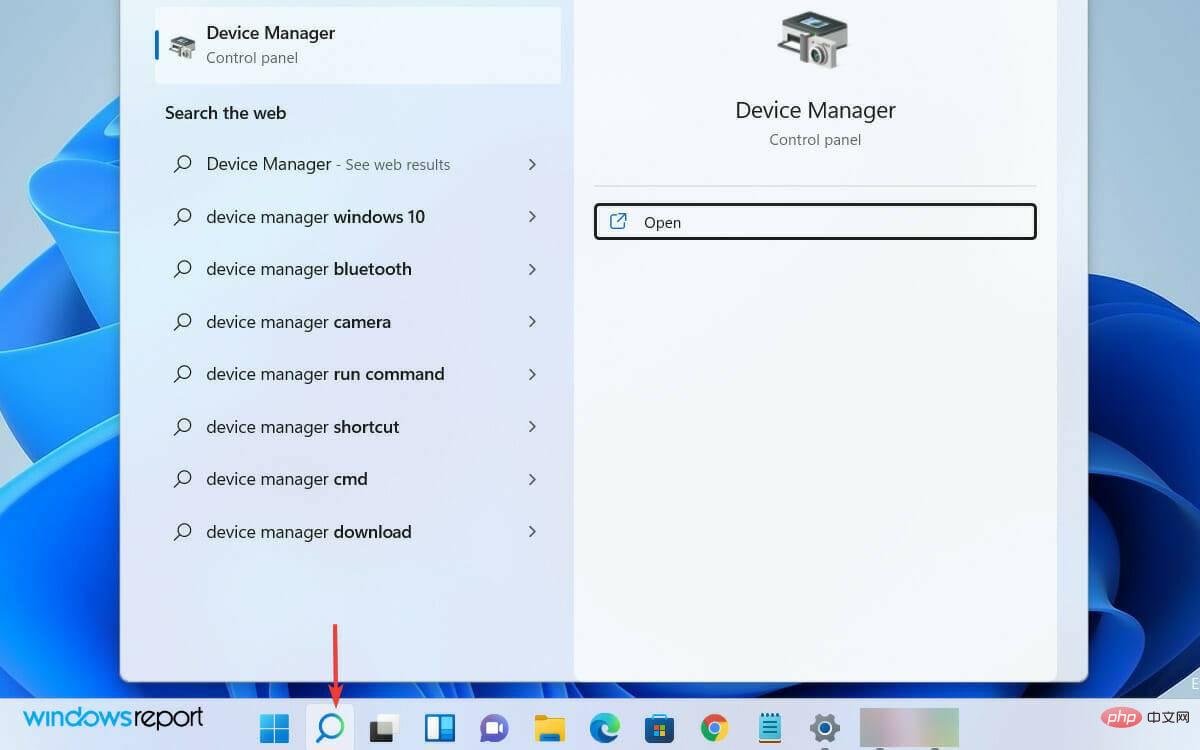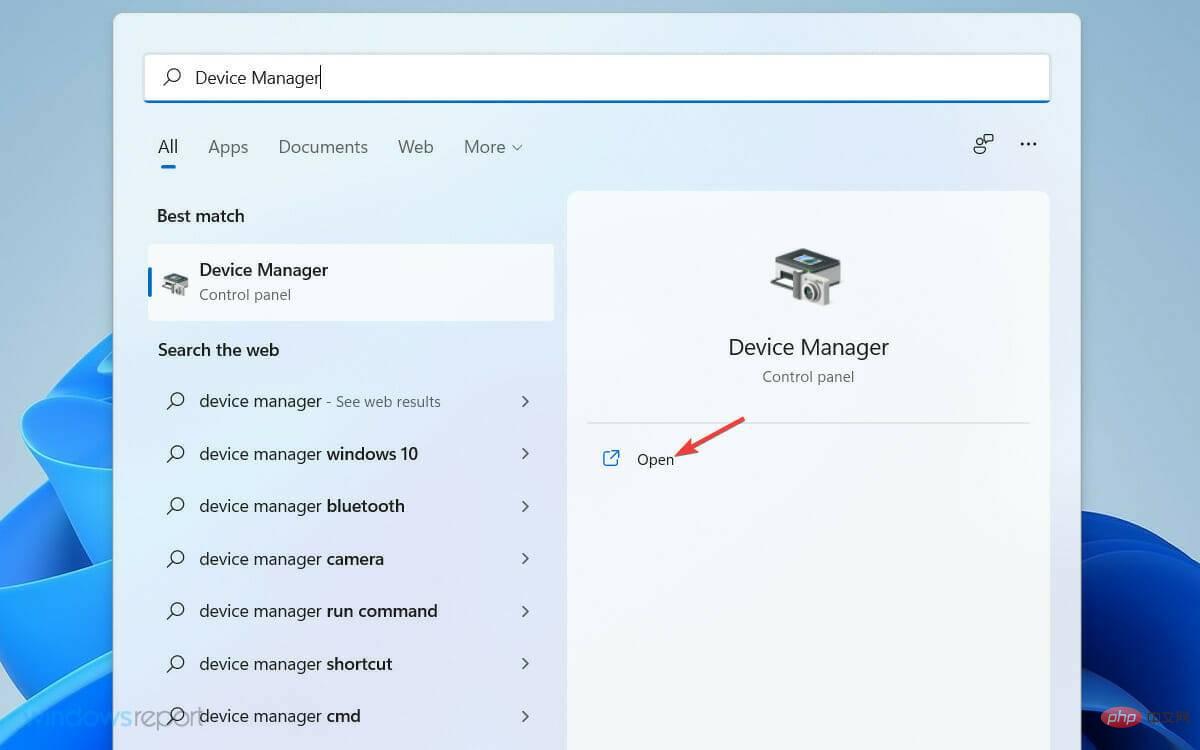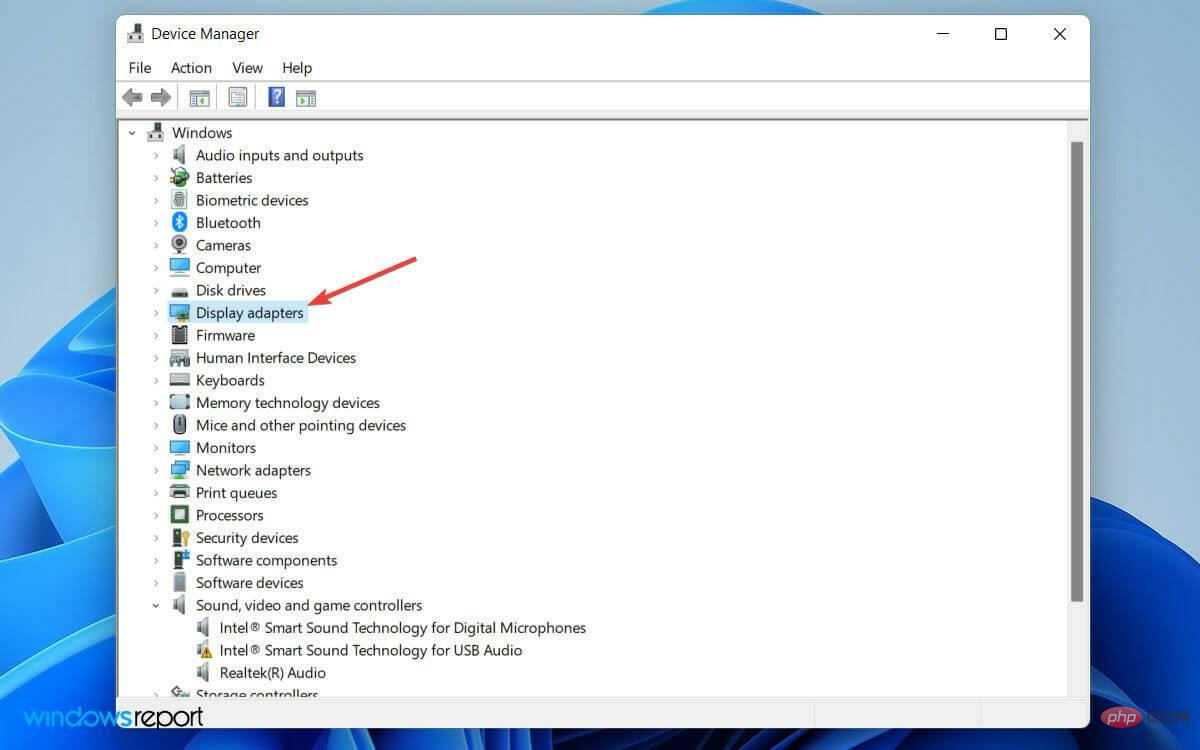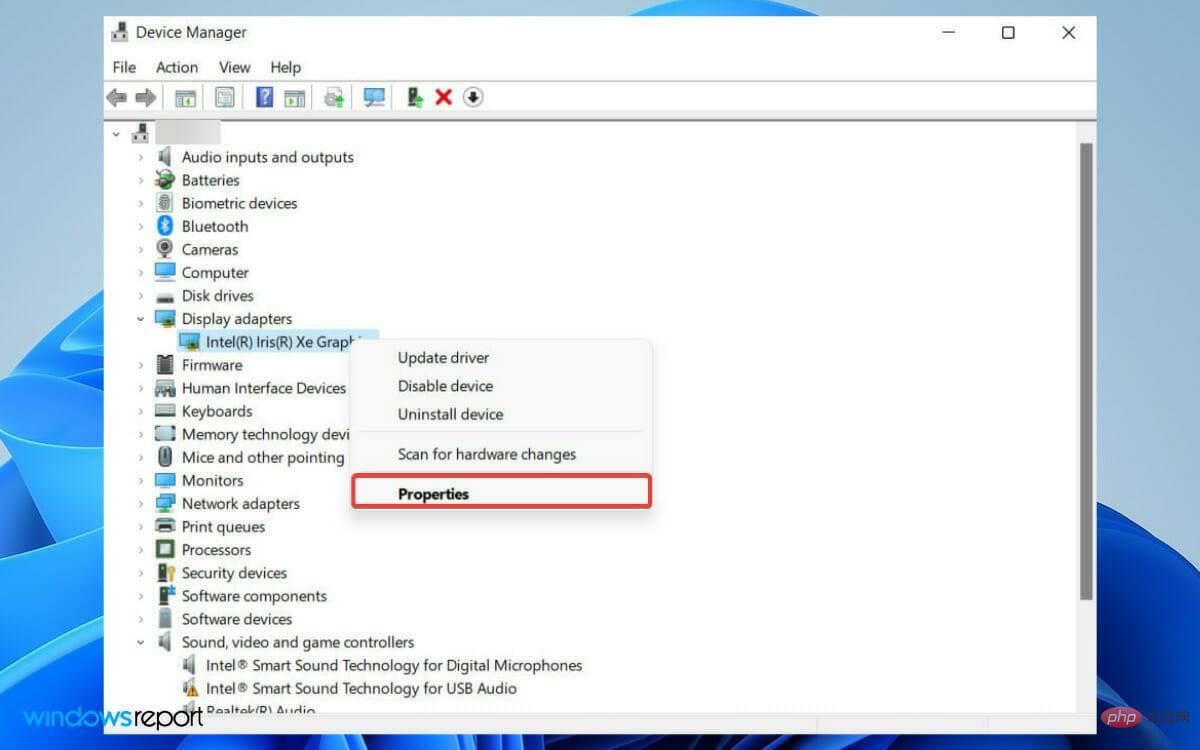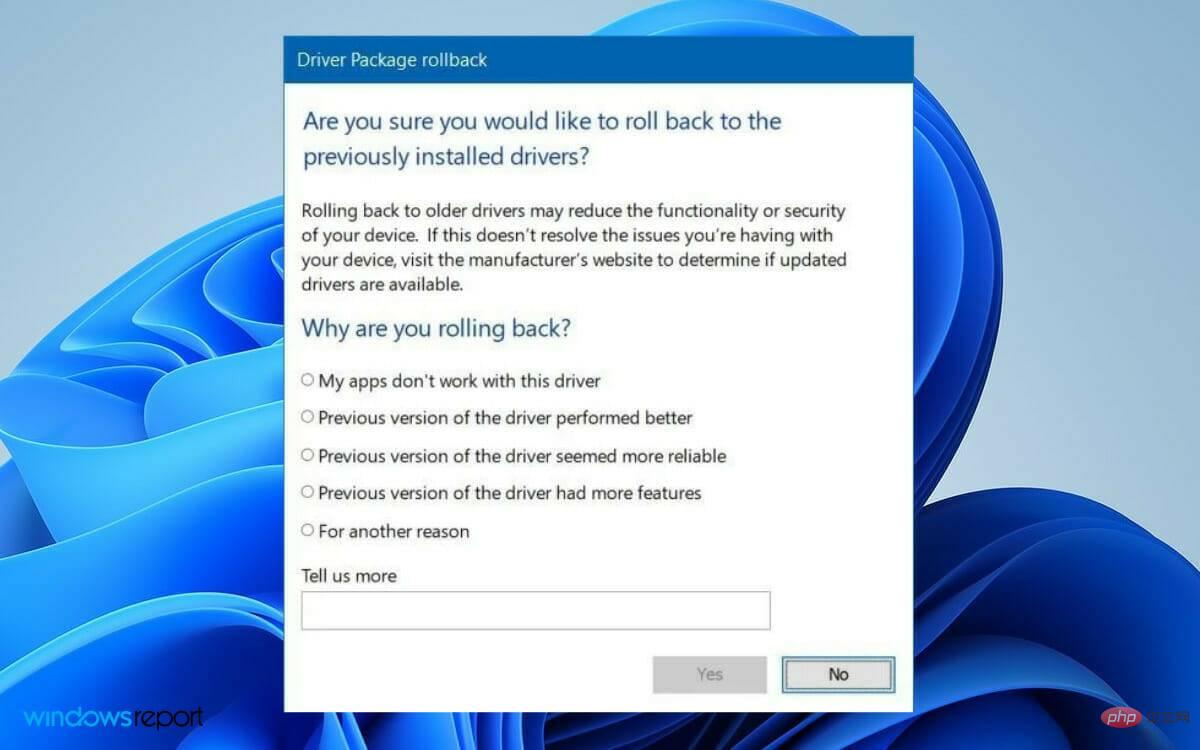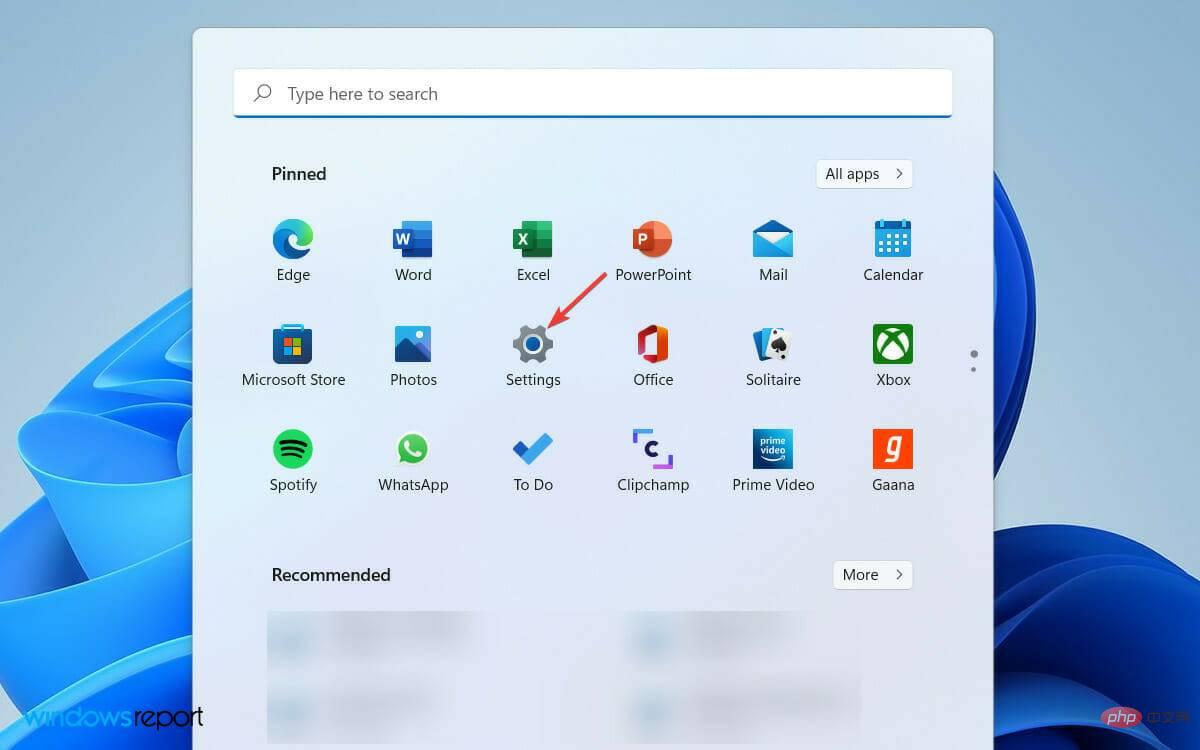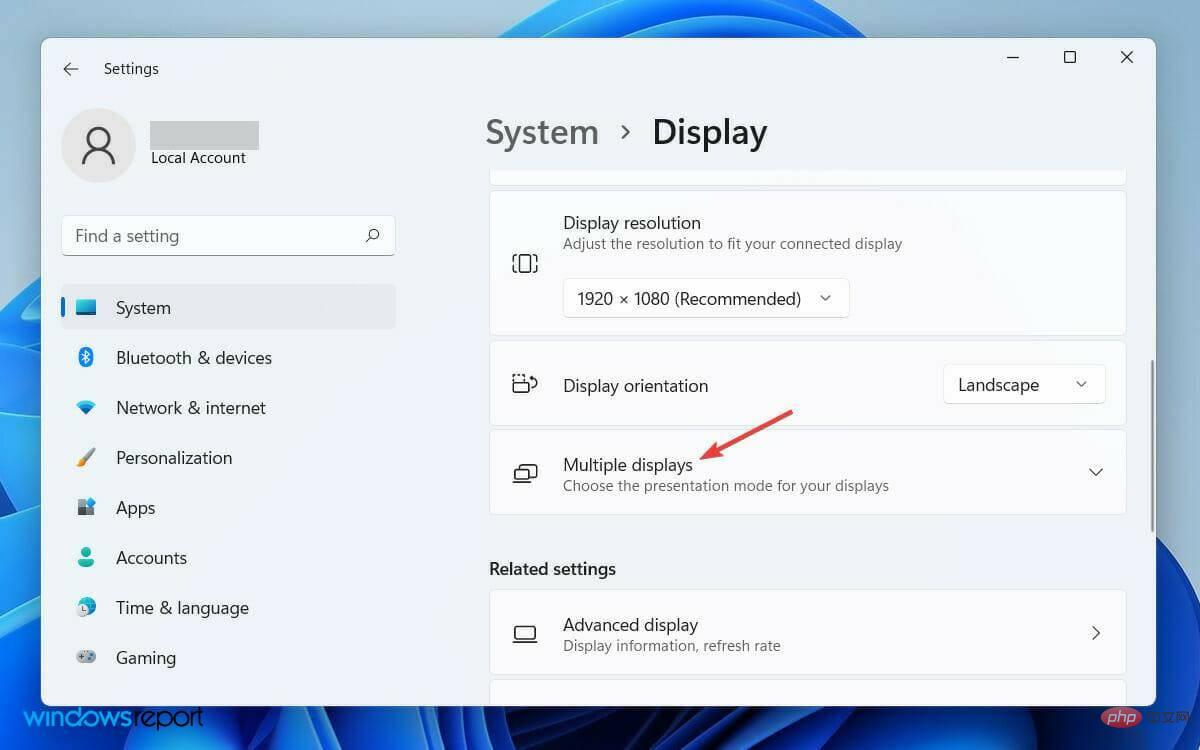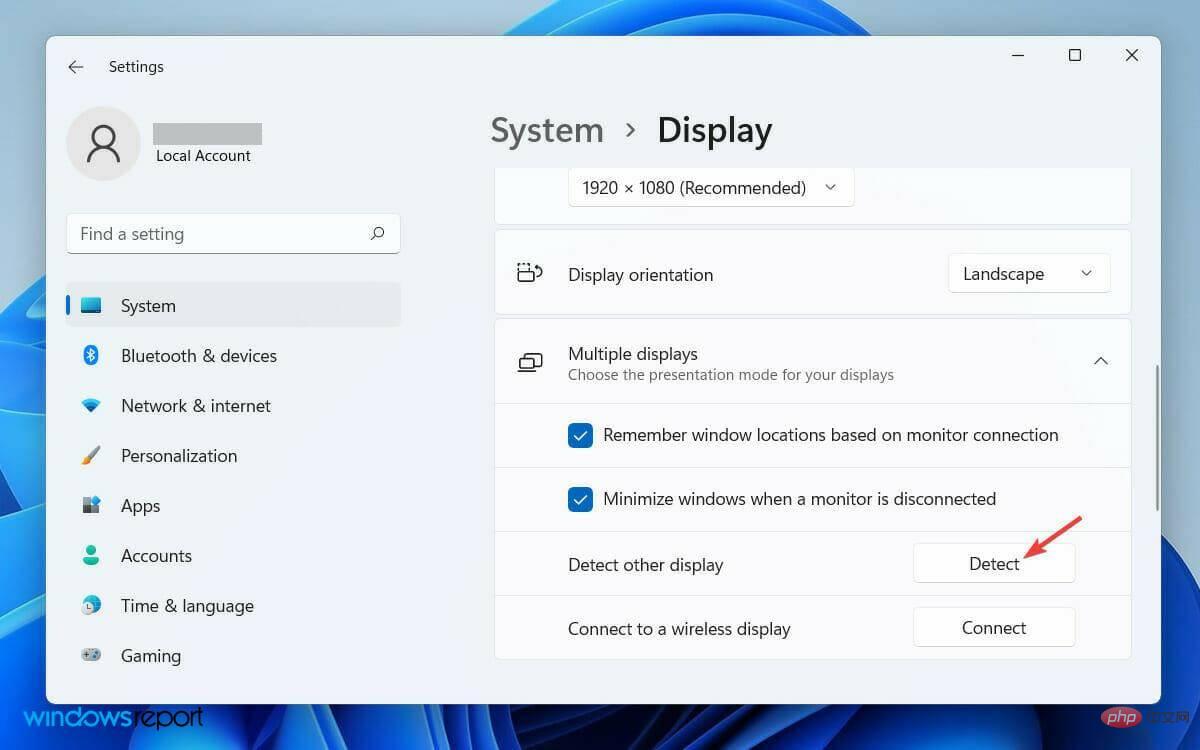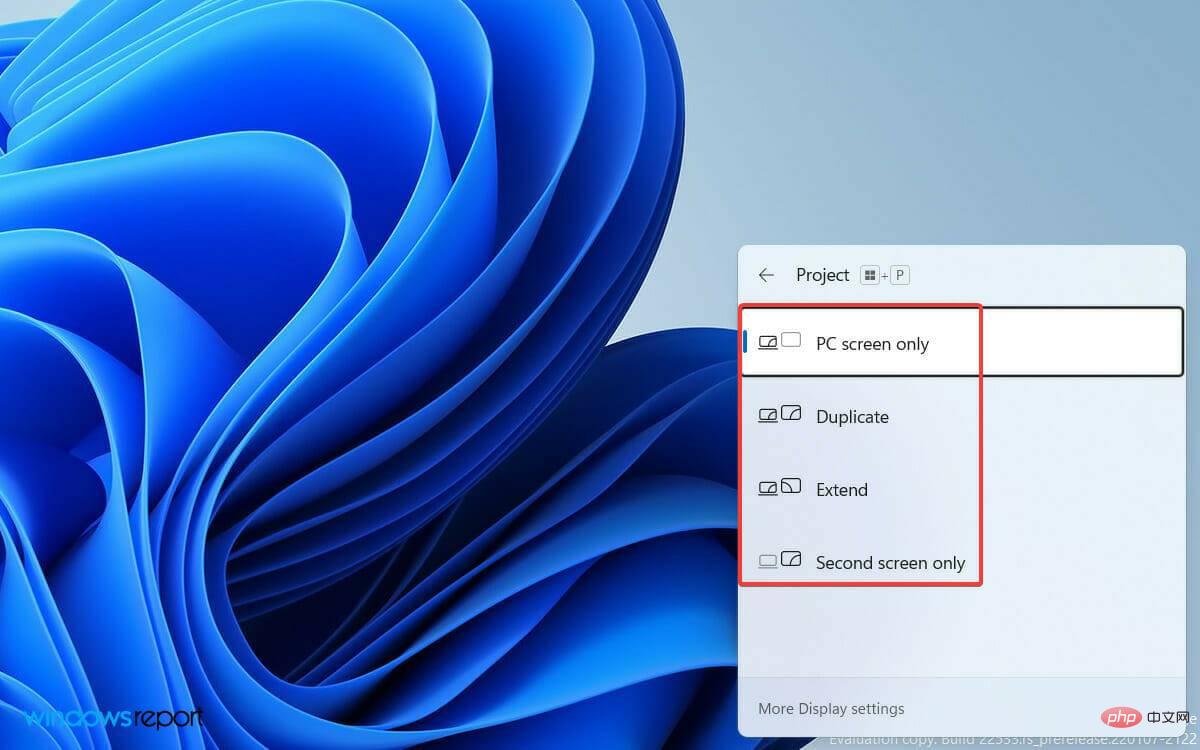How to fix Windows 11 not detecting second monitor issue?
A second monitor will definitely increase your productivity, especially if your job requires running multiple programs simultaneously.
Windows 10 users are experiencing similar issues when using two monitors, and as you might have guessed, the solutions to fix the problem are very similar.
There could be several reasons why the operating system is not detecting the second monitor and we have compiled a list of all the possible factors that may cause this issue.
Why is my second monitor not registering?
As you know, you need to use the HDMI port or VGA port on your computer to connect a second monitor.
But any issues with the ports or cables could be the reason why your second monitor is not registering.
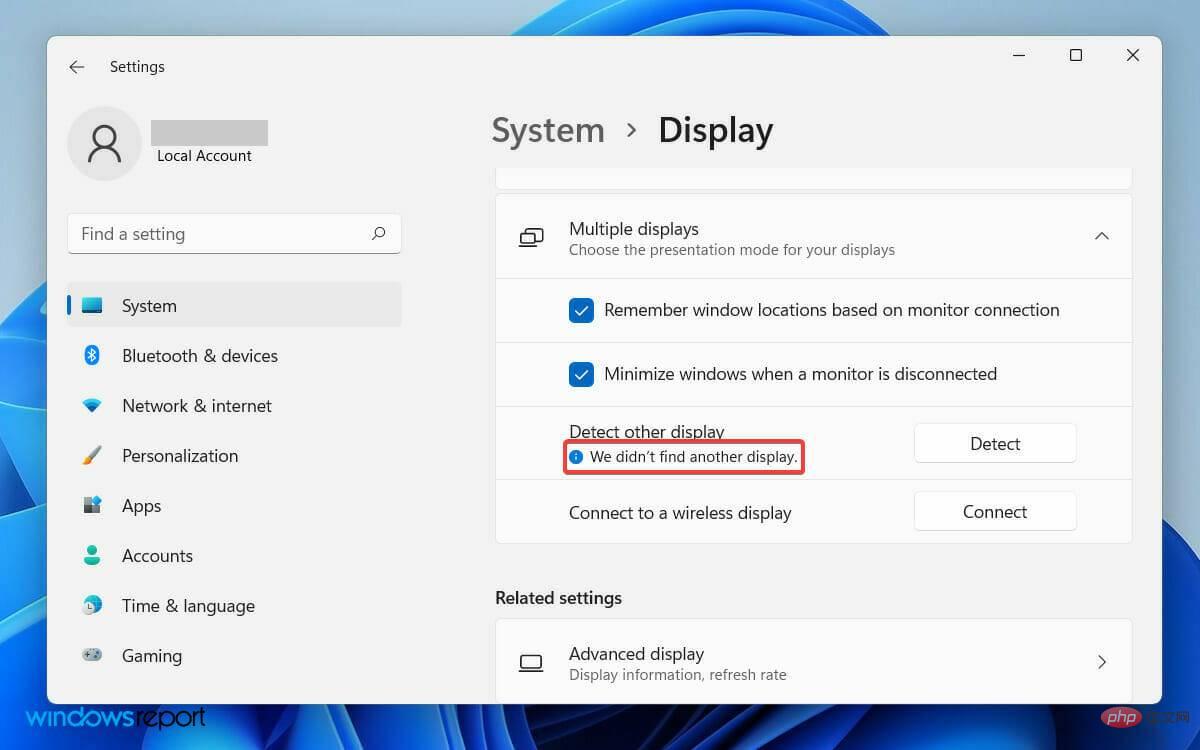
However, the error message you find in the Settings app doesn’t provide much More details, just wrote that we didn't find another showing.
So the initial step would be to check and confirm that your PC's physical ports are working and that the cables you are using are in good condition.
Beyond that, if you haven't updated your display driver recently, it may be causing you problems. Outdated graphics card drivers can cause compatibility errors. This may result in your secondary display not being detected.
Whatever the reason behind the issue, we have noted here all the simple solutions that can fix Windows 11 second monitor not detected issue.
How to fix Windows 11 not detecting second monitor?
1. Restart your computer
- Open the "Start" menu from the left side of the taskbar.

- Then click the Power icon on the right.

- Select Restart from the list of options to restart your PC.

If the second monitor is not detected, restarting your PC is the easiest solution. This may be a temporary issue and simply restarting Windows will fix it. In fact, this solution also works on Windows 10 PCs.
If you use a laptop connected to an external monitor for a better viewing experience, simply closing its lid is said to work for many users.
Usually, the reason behind the error may be conflicting programs running in the background. However, when you restart your computer, the running programs will close and you may get rid of this problem.
2. Update the display driver
- Press the Windows R key to open the "Run" dialog box.

- Enter devmgmt.msc in the search field and click the button Enter.

- Find and expand the Display Adapters tab in the Device Manager window.

- Right-click on your graphics card and select Update Driver from the list of options.

- Select the Automatically search for drivers option when the Update Driver window opens.

- Now, wait until Windows finishes searching for the latest drivers.

- Finally, follow the simple on-screen process to update your display driver to the latest version.
Outdated display drivers can cause conflicts between the software and hardware components of your PC.
So, if you have not updated your display driver recently, follow the steps above to update it and resolve the issue. You can choose driver update software tools such as this site to automatically update your display driver.
3. Change the display frequency
- Press the Windows I key to open the settings on the PC.

- Then, click the Show tab under System Settings.

- Now, scroll down and click on the Advanced Display option.

- Then, from the Select a monitor to view or change its settings tab, select the monitor whose frequency you want to change.

- Finally, from the Select Refresh Rate tab, select a refresh rate that both monitors support.

Using a different refresh rate on the second monitor may cause temporary software conflicts on the system.
Ultimately, this may cause Windows to fail to detect the monitor. However, you can solve this problem by changing the display frequency setting.
4. Roll back the graphics driver
- First, click the Search icon on the toolbar and enter Device Manager.

- Now, open Device Manager from the search results.

- Then, find and expand the Display Adapters tab from the list in the Device Manager window.

- Right-click your graphics driver and select Properties in the list.

- In the Properties window, click the Driver tab and select the Rollback Driver option.

- In the warning popup, select the option Previous version of the driver perform better.

- Finally, click the is button below.
Sometimes, newer driver versions can cause errors. In this case, rolling back to the previous version will resolve the issue.
How do I get Windows to recognize my monitor?
If your Windows doesn't automatically recognize the second monitor, you can force the operating system to detect it. Follow the steps below to do this:
- Click the Windows logo on the toolbar to open the Windows Start menu.

- From there select Settings and click System.

- Then, scroll down and expand the "Multiple Monitors" tab under the "Scale and Layout" section.

- Finally, click the Detect button after the Detect other display option.

Once you follow the steps correctly and your second monitor is connected to power and computer, your machine will definitely detect it.
Sometimes, the operating system does not automatically detect the second monitor; therefore, detecting it manually is always an option.
Customizing a second monitor can increase your computer's usability. You can use the second monitor to run games or any specific application.
How do I customize my second monitor?
Windows offers four different options when using a second monitor on your PC. Depending on your needs, you can choose one and start using it.
Here's an overview of how to customize your second monitor to suit your work requirements.
When you connect a second monitor to your computer, Windows 11 will mirror your primary monitor on it. If you need to change your availability, follow the steps below.
- Press the P key on the Windows keyboard.
- Then select the option that suits your purpose from the list of options below.

- PC screen only allows you to view content on a single monitor
- Extended mode allows you View your desktop across multiple screens, where you can use both monitors for different activities
- Duplicate option appears by default as it reflects the primary display of the second one
- Using the Second screen only feature, you can only view everything on the second screen
There are various dual monitor software tools available that can help improve your Experience in a dual monitor setup. Third-party dual-monitor solutions allow you to customize more features than you normally can on Windows.
The above is the detailed content of How to fix Windows 11 not detecting second monitor issue?. For more information, please follow other related articles on the PHP Chinese website!

Hot AI Tools

Undresser.AI Undress
AI-powered app for creating realistic nude photos

AI Clothes Remover
Online AI tool for removing clothes from photos.

Undress AI Tool
Undress images for free

Clothoff.io
AI clothes remover

Video Face Swap
Swap faces in any video effortlessly with our completely free AI face swap tool!

Hot Article

Hot Tools

Notepad++7.3.1
Easy-to-use and free code editor

SublimeText3 Chinese version
Chinese version, very easy to use

Zend Studio 13.0.1
Powerful PHP integrated development environment

Dreamweaver CS6
Visual web development tools

SublimeText3 Mac version
God-level code editing software (SublimeText3)

Hot Topics
 What is the reason why PS keeps showing loading?
Apr 06, 2025 pm 06:39 PM
What is the reason why PS keeps showing loading?
Apr 06, 2025 pm 06:39 PM
PS "Loading" problems are caused by resource access or processing problems: hard disk reading speed is slow or bad: Use CrystalDiskInfo to check the hard disk health and replace the problematic hard disk. Insufficient memory: Upgrade memory to meet PS's needs for high-resolution images and complex layer processing. Graphics card drivers are outdated or corrupted: Update the drivers to optimize communication between the PS and the graphics card. File paths are too long or file names have special characters: use short paths and avoid special characters. PS's own problem: Reinstall or repair the PS installer.
 How to speed up the loading speed of PS?
Apr 06, 2025 pm 06:27 PM
How to speed up the loading speed of PS?
Apr 06, 2025 pm 06:27 PM
Solving the problem of slow Photoshop startup requires a multi-pronged approach, including: upgrading hardware (memory, solid-state drive, CPU); uninstalling outdated or incompatible plug-ins; cleaning up system garbage and excessive background programs regularly; closing irrelevant programs with caution; avoiding opening a large number of files during startup.
 How to solve the problem of loading when PS is always showing that it is loading?
Apr 06, 2025 pm 06:30 PM
How to solve the problem of loading when PS is always showing that it is loading?
Apr 06, 2025 pm 06:30 PM
PS card is "Loading"? Solutions include: checking the computer configuration (memory, hard disk, processor), cleaning hard disk fragmentation, updating the graphics card driver, adjusting PS settings, reinstalling PS, and developing good programming habits.
 Is slow PS loading related to computer configuration?
Apr 06, 2025 pm 06:24 PM
Is slow PS loading related to computer configuration?
Apr 06, 2025 pm 06:24 PM
The reason for slow PS loading is the combined impact of hardware (CPU, memory, hard disk, graphics card) and software (system, background program). Solutions include: upgrading hardware (especially replacing solid-state drives), optimizing software (cleaning up system garbage, updating drivers, checking PS settings), and processing PS files. Regular computer maintenance can also help improve PS running speed.
 How to solve the problem of loading when the PS opens the file?
Apr 06, 2025 pm 06:33 PM
How to solve the problem of loading when the PS opens the file?
Apr 06, 2025 pm 06:33 PM
"Loading" stuttering occurs when opening a file on PS. The reasons may include: too large or corrupted file, insufficient memory, slow hard disk speed, graphics card driver problems, PS version or plug-in conflicts. The solutions are: check file size and integrity, increase memory, upgrade hard disk, update graphics card driver, uninstall or disable suspicious plug-ins, and reinstall PS. This problem can be effectively solved by gradually checking and making good use of PS performance settings and developing good file management habits.
 Is PS slow loading related to other programs that are running?
Apr 06, 2025 pm 06:03 PM
Is PS slow loading related to other programs that are running?
Apr 06, 2025 pm 06:03 PM
The secrets to mastering Office software include: understanding different versions and platforms, correctly installing and configuring, proficient in using the software interface, in-depth understanding of feature operations, application collaboration and sharing functions, utilizing templates and styles, mastering advanced skills, and solving common problems. In addition, you need to choose a version that suits your needs, make good use of templates and styles, develop backup habits, and learn shortcut keys and advanced techniques to improve efficiency.
 How to solve the problem of loading when PS is started?
Apr 06, 2025 pm 06:36 PM
How to solve the problem of loading when PS is started?
Apr 06, 2025 pm 06:36 PM
A PS stuck on "Loading" when booting can be caused by various reasons: Disable corrupt or conflicting plugins. Delete or rename a corrupted configuration file. Close unnecessary programs or upgrade memory to avoid insufficient memory. Upgrade to a solid-state drive to speed up hard drive reading. Reinstalling PS to repair corrupt system files or installation package issues. View error information during the startup process of error log analysis.
 How to use mysql after installation
Apr 08, 2025 am 11:48 AM
How to use mysql after installation
Apr 08, 2025 am 11:48 AM
The article introduces the operation of MySQL database. First, you need to install a MySQL client, such as MySQLWorkbench or command line client. 1. Use the mysql-uroot-p command to connect to the server and log in with the root account password; 2. Use CREATEDATABASE to create a database, and USE select a database; 3. Use CREATETABLE to create a table, define fields and data types; 4. Use INSERTINTO to insert data, query data, update data by UPDATE, and delete data by DELETE. Only by mastering these steps, learning to deal with common problems and optimizing database performance can you use MySQL efficiently.



